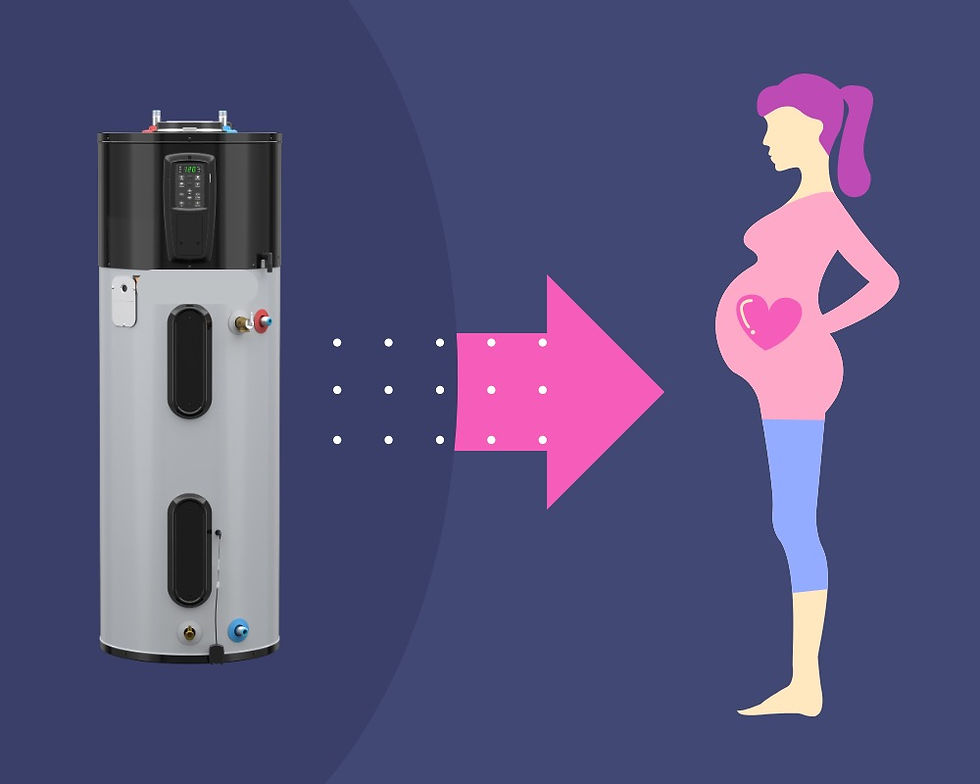Is There a Heat Pump in My Future?
- Gary Hedden
- Dec 5, 2022
- 3 min read
Heat pumps are one of the most impactful ways to combat climate change, but people wonder, what are they, how do they work, and does it make sense for me? GreenTown Los Altos teamed up with two seniors at San Jose State University to evaluate heat pump technology and answer those questions.

Nickon Ghodoosian and Roger Bumgarner, seniors at SJSU in the Dept. of Environmental Studies, took on the challenge. They are enrolled in a Senior Projects class taught by Professor Katherine Cushing, head of the Department. Nickon and Roger reviewed the literature, interviewed experts in the field, homeowners who have heat pump systems and contractors who have installed heat pump systems. They presented their findings at the Los Altos Library, Oct. 26, to an audience that was clearly interested in knowing all about heat pumps judging by the robust discussion after the slide show presentation.
Nickon and Roger explained the basics. Heat pumps work by using a coolant to transfer heat. We are familiar with air conditioners that take heat from a house. Coolant is circulated through coils of tubing in the house, warming it up, and then circulated through coils of tubing outside the house to be cooled by the outside air. Working in reverse, the heat pump can heat a house. These are called air source heat pumps, the typical choice in California. Heat pumps can heat your water too. According to TECH Clean California, the cost for a home heat pump in Santa Clara County is $21,212 and for a hot water heat pump is $6,461. If ducting needs to be installed or repaired, or if the electrical panel needs to be upgraded, the cost will go up.
Speaking of costs, the recent Inflation Reduction Act offers tax credits up to 30% and discounts up to $8000, and there are a number of local rebates ranging from $50 to $2500.
A number of good points were raised during the discussion.
Silicon Valley Clean Energy (SVCE) is offering many rebates including $2000 to replace your gas fired water heater and $1000 for a main panel upgrade. SVCE will also be rolling out a new rate plan in December to encourage all-electric homes. Other rebates are offered by BayREN.
Concerning operating costs, there was no consensus. Heat pumps use more electricity, which is expensive, but gas fired units use a lot of gas, and although less expensive, more is used, so not much if any trade off.
One consideration to keep in mind is the noise of the compressor. The location is important, and you should consider models with the lowest decibel rating if that is a concern. A dual speed or a variable speed unit will be quieter.
There can be noise in the ductwork. Some people report more noise while others report less noise. The air flow is lower than with gas fired units so it should be quieter, and the combustion noise of the gas unit will no longer be a factor.
The cool air that is produced is another consideration. If in the garage, that can be welcome in the summer. If the unit is in the house, then that must be addressed.
There is no longer gas in the house and that is a benefit with healthier indoor air and less fire risk.
One option that was mentioned is a small heat pump, called a mini-split. Costing about $6000 it is great for one room and requires no duct work. We heard from one person who installed two because he liked them so much.
People also wondered about heating a swimming pool. It can be done, but be sure to use a pool cover to retain the heat and reduce evaporation. For people who want a heated pool in the winter, a higher capacity heat pump is required.
One final consideration, heat pumps heat more slowly than gas fired furnaces, so it is necessary to set the timer to start warming the house earlier in the morning and to allow time for the hot water heater to recover after that second shower (or get a higher capacity unit).
My impression is that while cost and performance are very important, many people truly want to cut their carbon footprint and will be installing heat pumps. We at GreenTown Los Altos applaud that!




Comments